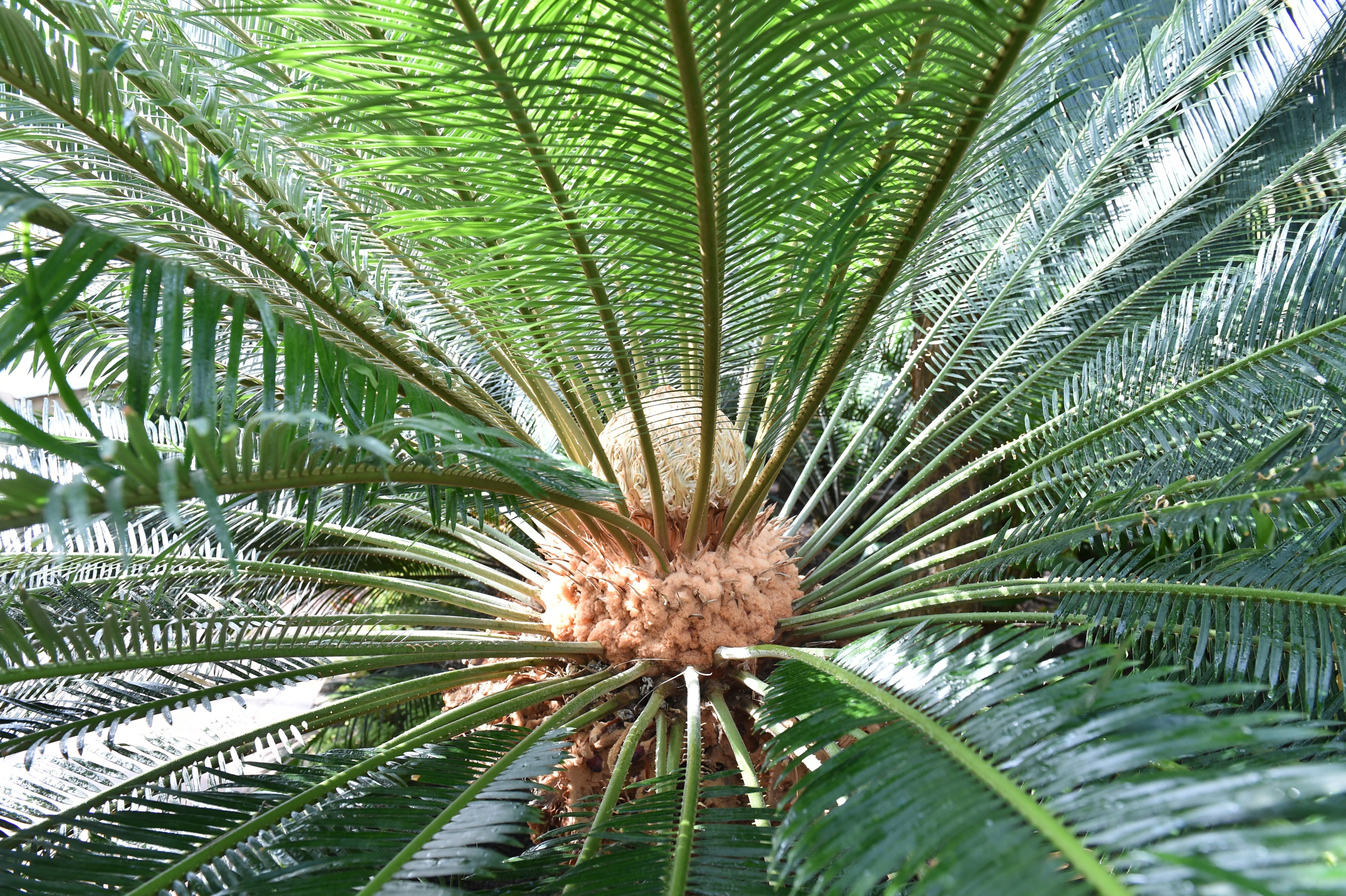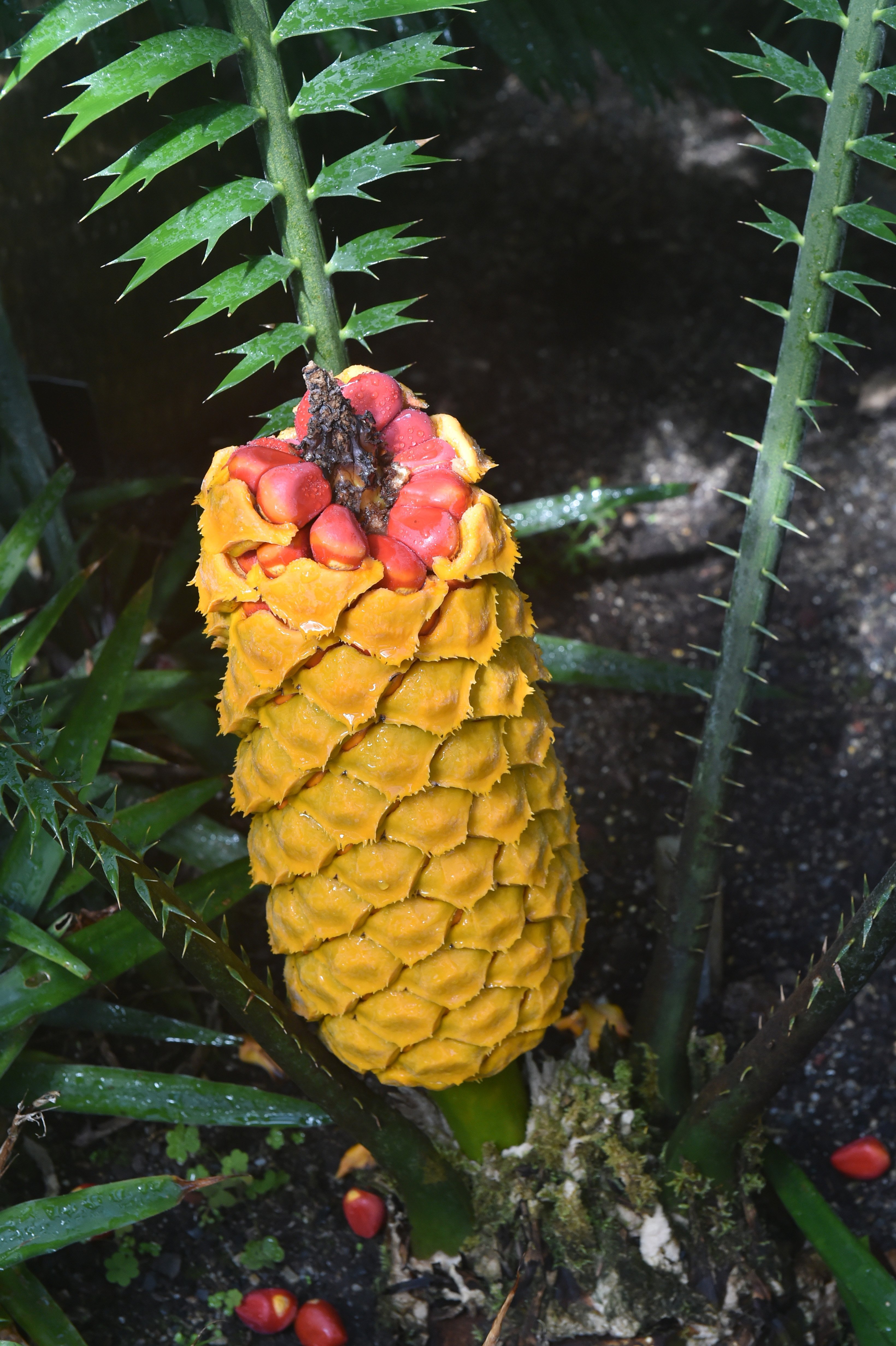
Cycads are often mistaken for palms or ferns because of their foliage, but these ancient seed plants are gymnosperms, most closely related to ginkgos and conifers. Fossil evidence shows that cycads existed during the Permian period, over 280 million years ago. Cycads were widely distributed across the supercontinents of Laurasia and Gondwana, thriving during the Mesozoic, sometimes called the "Age of Cycads". Later, as flowering plants became more dominant, the diversity of cycads decreased. Today, there are about 300 species, showing that cycads have survived and adapted through millions of years of change.

We have about a dozen types of cycad in the winter garden, with cones on the Cycas taiwaniana.
The Encephalartos villosus has already produced red seeds, giving visitors a chance to admire their beauty, but unfortunately as they are unfertilised, they will not grow.
Ben Xie is the winter garden collection curator at the Dunedin Botanic Garden.













